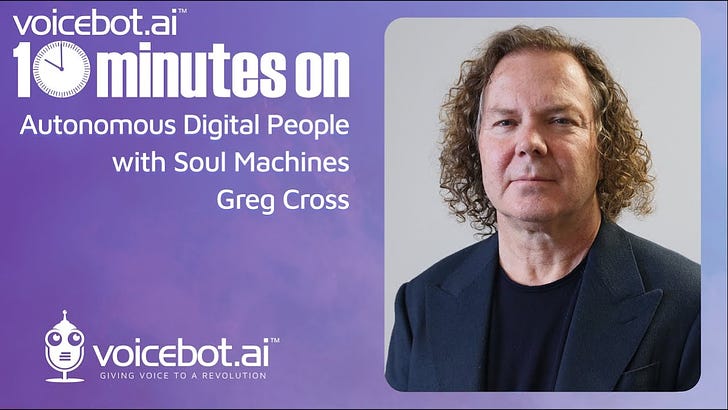Autonomous Digital People Get More Realistic
Where virtual humans are going to make an impact first
It’s one thing to have a digital avatar that you can manually control. It’s another proposition to have one that can hold a conversation about a prescribed set of topics. It’s one step further to have a digital twin, which is not a one-way video, but a two-way dialogue.
Soul Machines is focused on delivering digital people with “digital brains.” These could be completely synthetic creations such as Nestle’s Toll House cookie coach Ruth. Or, they could be digital twins of real people such as Digital Jack Nicklaus (aka Digital Jack) or Digital Carmelo Anthony (aka Digital Melo).
In both formats, fully synthetic and digital twin, the digital brain carries out a similar function. It is trained with data from the subject (i.e. the person) to make the movements and speaking style as a relatively good match to a real person or the real person in the case of a digital twin. You need to cross that uncanny valley.
The digital humans are also trained and fed information about a specific topic such as baking cookies or the life and sayings of Jack Nicklaus, along with the game of golf. That training and knowledge base, along with an NLP engine and dialogue manager, enables the digital people to carry on conversations with real people about specific topics.
Digital People State of the Art
I spoke with Greg Cross, CEO of Soul Machines, about the autonomous digital people (i.e. virtual humans) created by the company. Other companies focus on scripted versions that cannot hold a conversation but can deliver pre-recorded content when activated. Then there are autonomous digital people that can have a conversation with you. The latter model is more complex but also has more versatility and the opportunity to deliver greater value.
Soul Machines has focused on autonomous digital people for a decade, which includes a dual focus on robust digital rendering and robust natural language processing and dialogue management. In the video interview with Greg, we discuss the state of the art of autonomous digital people and the core use cases and show a couple of demonstrations.
Where Digital People Will Make an Impact
Many people have assumed that digital people would first make an impact in customer service. The solutions are certainly being trialed in those roles. However, Cross told me offline that it is an interesting dilemma to consider what situation you would like a customer to first encounter your digital human. Given that customers are often in a negative state of mind when engaging in customer service, it may not be the ideal starting point.
With that said, digital humans certainly have a place in the contact center. They generally provide higher engagement and satisfaction than a chatbot box. There is also emerging evidence that marketing use cases may be the first to take off. Several companies in the space have shared sales lift results from digital humans employed during e-commerce shopping.
And there is the brand ambassador role. Cross mentions in the interview that many consumer brands have no direct relationship with their end customers, the consumers. Wholesalers, dealers, and retailers often hold those relationships. For a company like Nestlé, its cookie coach, Ruth, can dramatically increase consumer touchpoints. More touchpoints mean more learning as well. The data gathered around what consumers are asking about can be invaluable.
Wither the Metaverse
There is an emerging consensus that digital people will have a role in the metaverse as non-player characters (NPC) — essentially helpers. Also, given that a central tenet of metaverse virtual worlds is time linearity and synchronicity, there is virtually no way to be fully available at all times without some digital helpers. Digital Melo can be a stand-in for the real Carmelo when he is practicing, playing, or otherwise busy.
However, Cross suggested in another conversation that the 2D world of web1 and web2 isn’t going away and he expects far faster adoption there. The reason is simple. Everyone is already there. The metaverse has a long adoption cycle ahead of it, and digital humans will play an important role, but it will take time to develop because the metaverse will take time to develop.
Soul Machines is working on both now so they can help companies and celebrities fulfill the 2D needs of today and carry over a common 3D experience when the digital human creator is ready to make the metaverse leap. It’s an interesting thesis and we can all see how it plays out in real time.




